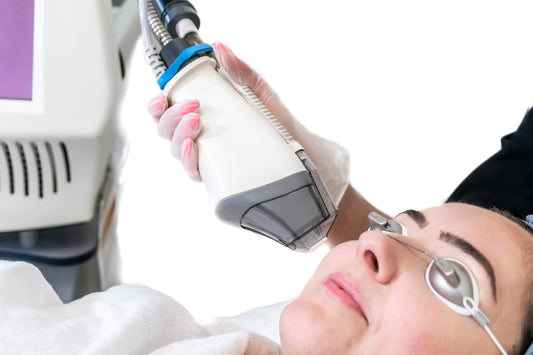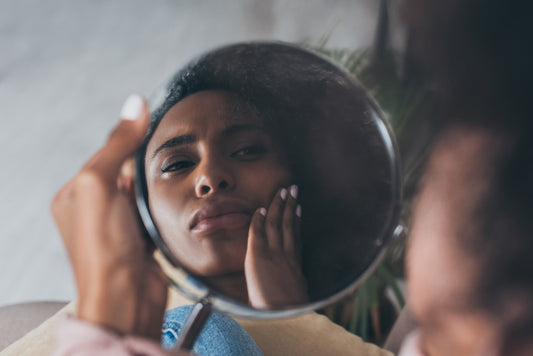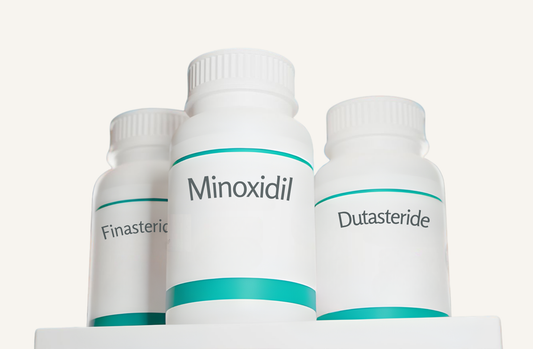UV intensity is higher in the summer months, especially near the equator where the sun is most directly overhead.1 To protect yourself from these rays and the havoc they can wreak on your skin, it’s crucial that you invest in a quality sunscreen. But with so many products offering different SPFs, how do you know which one to choose?
Below, Dr. Anthony Nuara, MD PhD FAAD answers your most pressing question about sunscreen: What SPF should I use? He’ll also share other sunscreen recommendations, such as when to apply SPF and more.
What Should You Look For in an SPF?
I jokingly tell my patients that the best sunscreen is the one you will actually wear. But in all seriousness, it’s important that you use a broad-spectrum sunscreen that protects against UVA and UVB rays with an SPF of 30 or higher. When it comes to daily facial sunscreen, I’d recommend you shoot even higher and go with SPF 50. If you exceed that, you may find the product is too heavy, leading you to apply too lightly or not at all. It’s also recommended that you opt for a water-resistant sunscreen, so it doesn’t easily come off, especially if you plan on swimming or you tend to perspire heavily. Just keep in mind that water-resistant doesn’t mean waterproof. Be prepared to reapply this kind of product often just like other sunscreens.
How Do You Determine the Level of SPF You Need?
SPF, or sun protection factor, is a rating based on the percentage of UVB rays that are blocked by the sunscreen. If you divide 100 by the SPF, it indicates what percentage of the UVB rays are getting through the sunscreen. With no sunscreen, SPF 0, you are getting 100% of the sun’s UV rays. But the following SPFs offer the following protection levels:
- SPF 10: Allows 10% of UV exposure (based on 100÷10)
- SPF 30: Allows 3%
- SPF 50: Allows just 2%
This means an SPF 50 sunscreen is blocking 98% of the sun’s UVB rays. But remember to not just rely on the SPF level to choose your sunscreen. Make sure it's a broad spectrum product so you know that UVA rays are also blocked.
Mineral Sunscreen vs Chemical Sunscreen
The main difference between mineral (physical) sunscreens and chemical sunscreens is that mineral sunscreens reflect UV rays, while chemical sunscreens absorb them.
Containing ingredients like zinc, titanium dioxide, iron oxide (tint), mineral sunscreens act like tiny mirrors that reflect the UV rays away from the skin. Putting a barrier between you and the sun, mineral sunscreens offer superb protection, especially for sensitive skin.
Chemical sunscreens contain active ingredients like oxybenzone, avobenzone, octisalate, octocrylene, homosalate, and octinoxate, which absorb UV rays. They are highly effective but are also broken apart by UV rays and release heat in the process.
My personal preference is to choose a thinner hybrid sunscreen that contains both mineral and chemical compounds for more protection that blends into skin.
How Much Sunscreen Should You Apply? (and How Often?)
It takes about 1 ounce (a shot glass) of sunscreen to cover an average adult. It should be applied to all exposed skin every morning as a habit, and if you plan on being outdoors, you should be prepared to reapply every two hours to ensure they’re working effectively. This is especially true if you are using a chemical sunscreen because its compounds break down.
If you’ve chosen a water-resistant sunscreen and plan on swimming, you will need to reapply around every 90 minutes because it will wear off faster.
Also follow these tips recommended by the American Academy of Dermatology Association2
- Remember to apply sunscreen to less obvious areas like the tops of your feet, your neck, your ears, and the top of your head
- Protect your lips with with a lip balm or lipstick with SPF 30 or higher
- Apply sunscreen to dry skin around 15 minutes before going outdoors
- Be sure to check the expiration date on your sunscreen and replace if necessary
Are There Ingredients to Avoid in Sunscreen?
Generally, dermatologists will tell you to avoid sunscreens that are combined with insect repellent because we want you to be able to reapply more frequently. Even more, according to the Skin Cancer Foundation, certain sunscreen formulations are less effective at protecting you from UV rays when used with DEET, the most common insect repellent.3They point to research that shows the combination led to a more than 30% reduction in SPF. DEET can also be absorbed into the skin, which can be toxic, especially in children.
While I personally prefer mineral sunscreens, the chemical sunscreens available in the US fall under Generally Regarded As Safe and Effective (GRASE) under the FDA. PABA is generally no longer found in sunscreens because of allergic reactions.
Does Skin Tone Matter When It Comes To Sunscreen?
Everyone needs sunscreen. Although people with darker skin produce more melanin (which provides some extra protection from the sun), they can still burn and they can still get skin cancer.4
We are fortunate to live in a time where tinted sunscreens are available to match just about every skin tone. Mineral sunscreens are also available in “clear” versions that will not leave a visible white film on the skin.
Anyone who claims they can’t wear sunscreen just hasn’t found the right one.
But wearing sunscreen is just one action you can take to protect yourself from the damage caused by sun exposure. Other sun-safe habits to adopt include:
- Seeking shade whenever possible, especially between the hours of 10am and 2pm
- Wearing hats, glasses, and sun-protective clothing
- Avoiding tanning beds
- Being extra cautious around water, snow, and sand, which can reflect harmful rays
- Always wearing sunscreen, even on cloudy days
- Performing regular skin self-exams to detect skin cancer early
For extra defense, consider using Foundation Skincare’s Spectrum supplement, which contains plant-based antioxidants and key vitamins like nicotinamide and vitamin D. The supplement helps fortify and protect optimal skin health while protecting the skin against sun damage and skin cancer and supporting skin renewal.
You can pair the supplement with FS Pigmentation Defense for even more support from antioxidants, vitamins, and herbs proven to improve hyperpigmentation and support healthy skin cell turnover.
Find even more products to help reverse sun damage and renew skin in the FS Collection and learn more tips on caring for your skin in the FS Journal.





